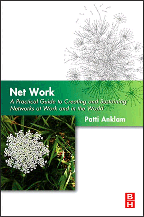Intellectual capital, knowledge management, and value networks
I was doing fact checking for Net Work yesterday and wanted to confirm the timeline for the work on intellectual capital and knowledge management. I discovered a short history of the idea of intellectual and its evolution on Karl-Erik Sveiby’s web site. Two interesting tidbits:
- Fall 1990: Term “Intellectual Capital” coined in Stewart’s presence
- Jan 1991: Stewart publishes first “Brainpower” article in Fortune
In 1997, two books titled Intellectual Capital were published, one by the aforesaid Stewart (Thomas A.), and the other by Leif Edvinsson and Michael S. Malone. The latter is somewhat more academic, but it’s hard to compete with Tom Stewart’s witty, fact- and anecdote-based style.
Stewart, who became the editor of the Harvard Business Review in 2002, wrote his Intellectual Capital while at Fortune magazine, and The Wealth of Knowledge in 2003. Both books are classics and must-reads for those interested in the history of knowledge management.
Credit for the coinage of the term “knowledge management” rests with Tom Davenport and Larry Prusak. (Bill Ives did a nice post on the story they tell in their book, What’s the Big Idea?, about their epiphany of hitting on the term.)
Naturally all these folks are connected, as are the memes of intellectual capital, knowledge management, and networks. At the time of the 1991 Brainpower piece, the social/organizational network analysis work was just getting started by Valdis Krebs and colleagues, so it’s not there, but the article gave me the kind of goosebump you get when you realize the answer has been there all the time. Stewart quotes Ted Smith from US West: “Managing knowledge as an asset spawns a whole new discipline.” The Xerox copier repairmen story is there, along with a prescient description of what we today call Human Capital Management — the mapping of a company’s intellectual assets with the strategic plan. The knowledge economy (I’m waiting for a Drucker book for his quotes from this same era) is summed up pithily in typical Stewart style:
The economic landscape of knowledge-intensive business can differ markedly from the familiar neoclassical world. “Buy land,” Will Rogers advised; “they ain’t makin’ any more of it.” But we make more knowledge every day… The greatest challenge for the manager of intellectual capital is to create an organization that can share the knowledge. Like money in a mattress,” says Hugh Macdonald, “intellectual capital is useless unless it moves. It’s no good having some guy who is very wise and sits alone in a room.” By finding wasy to make knowledge move, an organization can create a value network — not just a value chain.
Unfortunately, the archived version of the article doesn’t include charts or paragraphing, but it’s worth a read when you want to kick back and kick yourself for not getting it all sooner.





1Denham
wrote on 14 July 2006 at 16:28
Patti,
There is a good case to be made for Karl Wiig, Chris Locke and Debra Amidon being responsible for coining KM, perhaps as far back as 1985-1987.
http://www.entovation.com/images/wellhind.gif
KM history can be very different depending on your concept of knowledge, view of social interaction and the extent to which you tie or limit KM to (modern) technology.
2Patti
wrote on 18 July 2006 at 10:54
Thanks, Denham, for keeping me honest.
it looks like I fell once again into the trap of forgetting how much we all build on the memes in the ecosystem until words just come to us as if new.